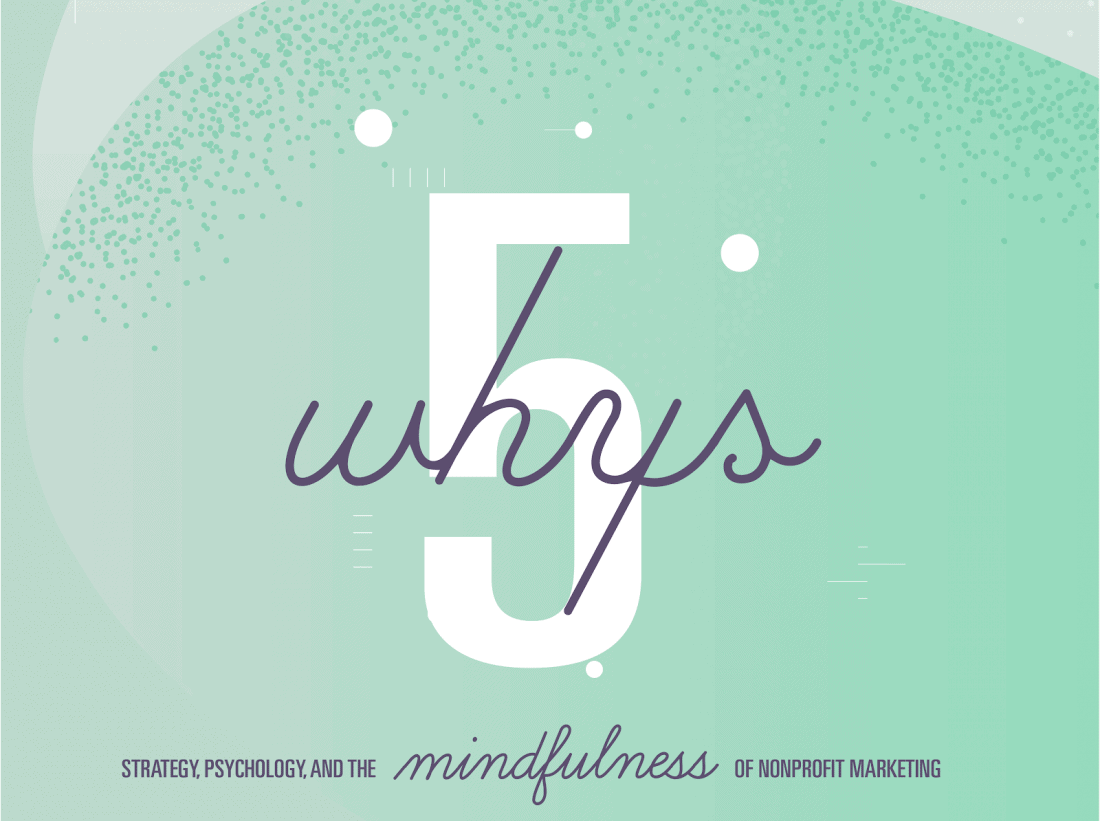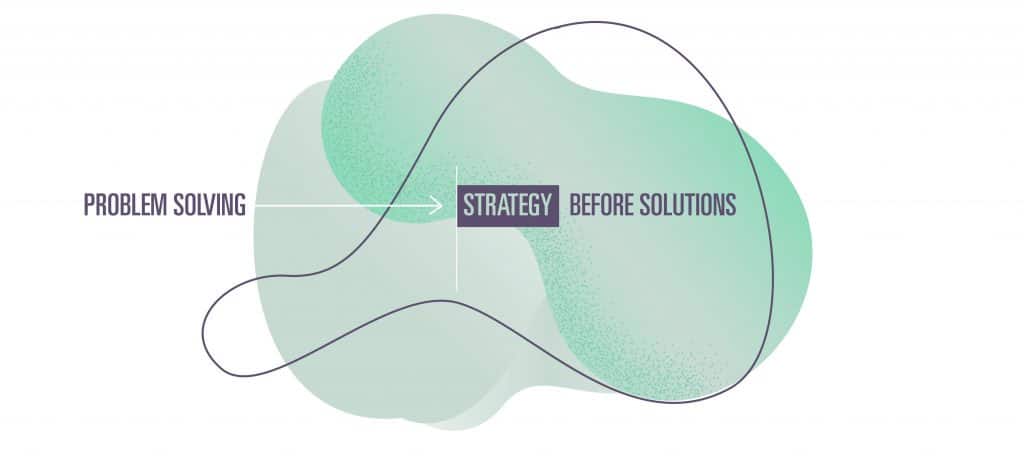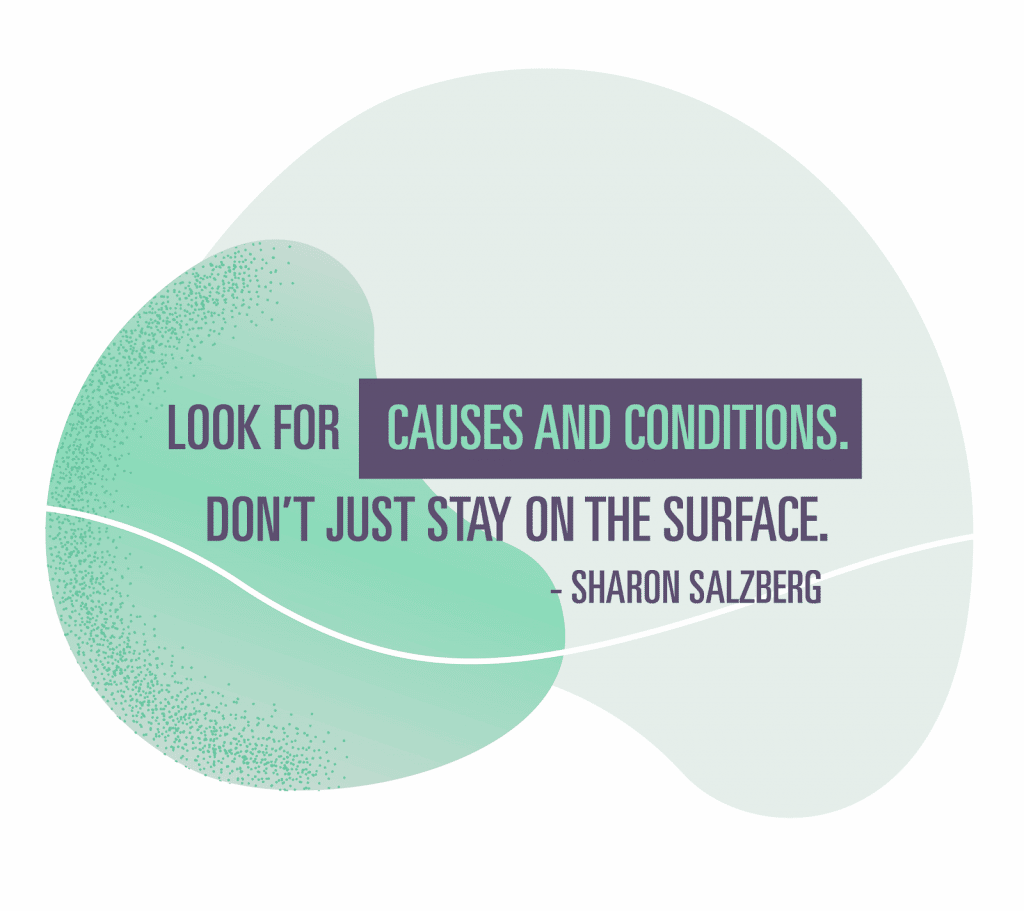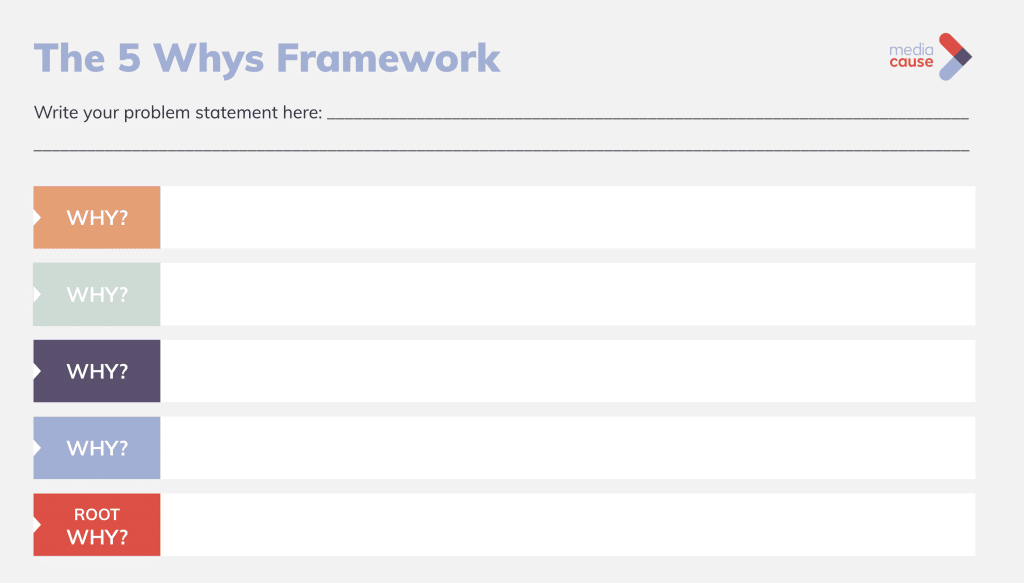
Before you decide on the HOW or WHAT, ask these 5 WHYs
This is part of a multi-part series: Strategy, Strategy, Psychology, and the Mindfulness of Nonprofit Marketing. If you missed the introduction or part one, head on over.
Imagine yourself in this not-too-far-fetched scenario for a moment:
You’ve just met with your organization’s marketing team (or if you’re a team of one, you’ve met with yourself!) to discuss a “problem” you’ve recently identified as a key priority to solve: growing your organic social media reach and engagement. After some spirited discussion, you’ve decided on a plan that includes three next steps you believe will help you achieve it:
1) ask your existing email subscribers to also follow you on social
2) create and launch paid social ads to attract new supporters
3) post organic social content more often so that when you do get new followers, there’s more for them to engage in
Your Board of Directors has agreed to your plan and given you $10,000 to make it happen. You put together an RFP to find an agency to help execute your plan and wait for the responses to roll in. Most of the agencies look at your request and say “Sure! We can do all those things. In fact, we’ll even do them for $8,000.” They lay out their approaches, their proposed media spend, and their expected KPIs, and send you back their responses for review and selection.
You instinctively think, “this is amazing!” You and your marketing team give (virtual) high-fives all around. You’ll get the solution you asked for, and your Board will be thrilled that you spent less than you had in mind. Everyone’s happy. Goal achieved. Problem solved.
Except…there’s a hard-to-see, yet significant, flaw with this way of thinking and working on both sides of the equation:
You didn’t ask the agencies you contacted to help you solve a problem. You came to them with your marketing solutions and tactical next steps—your HOW and your WHAT—already determined. And rather than asking WHY you came to those solutions or digging deeper into the root of the problem, all of the agencies just said “yes, we can do exactly what you asked us for.”
If you haven’t had a chance to read the first post in this series, it’s a good place to start, as it’ll provide even more context for understanding where the above scenario and approach breaks down:
Your team, and the agencies you contacted, fell in love with a solution before clearly understanding the problem.

When you jump to the HOW and the WHAT too quickly without first digging into the WHY, it’s easy to get stuck on your first and most obvious solution. Oftentimes, the first solution you come up with is not actually the best one. And, even more significantly, if you haven’t gone through the process of asking WHY you’re trying to solve a specific problem, or what other factors are contributing to it, you may not even be addressing the right problem in the first place.
—
A few weeks ago, I attended a virtual 4-day summit hosted by renowned mindfulness and meditation teacher, author, and speaker Sharon Salzberg. The summit was created to launch her new book, Real Change, which is (as the subtitle appropriately describes), is about how to use “Mindfulness to Heal Ourselves and the World.” About 45 minutes into the final day’s session, she began talking about how to create “bigger picture” systemic change, and shared a powerful anecdote about the difference in intent, and impact, between staying at the surface and really digging deeper.
“I probably know countless students at this point who will say to me—‘I started meditating and then I went out, taking a walk, and this guy came up to me and asked me for a dollar, and I gave him a dollar because that’s my habit. It’s what I do. But this was the first time ever I looked that man in the eye and realized he’s a human being, too.’
That, I have seen, I have real confidence in, as a power of meditation, of that process. But what I go on to say is, I’m not sure that that person then says—‘I wonder what the housing policy is in the city. WHY are there so many people on the street?’
That’s another orientation, almost another kind of training in looking. I’ve long thought about, how do you bring these things together? So I went there. In buddhist language, we’d say ‘Look for causes and conditions. Don’t just stay on the surface.’
Think about this phrase again:

In Sharon’s story, giving a dollar to a homeless neighbor on the street was her students’ gut-reaction, surface-level solution to a surface-level problem they encountered in their everyday lives. Giving that dollar felt good. It felt like progress—like they were checking a box for something they “should do,” and hopefully, also making a difference. After practicing meditation for a while, they gained the insight to take that same interaction one step further: looking the recipient of that dollar in the eyes for the first time and realizing their humanity, rather than seeing them as part of an “issue” that could be solved by throwing money at it. But continuing down that path, and getting into the messier and more complicated parts—asking the WHY about how that individual, and our society, ended up this way in the first place—is what so many of us, regardless of the situation, feel is one step too far outside our comfort zone. (Side note: I could do a whole other post on the idea of comfort vs. challenge vs. danger zones…and perhaps I will!)
—
Although the very foundation of our nonprofit work teaches us to diligently ask WHY about the issues we’re trying to solve (anyone in this space, including several of our own amazing clients, would have a better understanding of the systems that contribute to homelessness than an average citizen might), we often fail, as individuals and organizations, to apply this same approach to our marketing.
In the social media situation I posed earlier, creating emails, buying ads, and developing content are the surface-level solutions to the surface-level challenge of trying to get more followers. But have you considered going one step further to ask WHY you believe you need more followers? WHY you’re asking them to engage? WHY (and how) they can help you achieve your mission? WHY more people aren’t already following your organization?
All this questioning might sound unnecessary. But in the same way that we know we need to address the root causes of systemic social problems in order to change them, we also need to address the root causes of marketing problems in order to make tangible progress.
Not to fear: it’s not as complex or heavy as it seems. There’s even a framework you can use for walking through this problem exploration called the 5 WHYs. It’s pretty much exactly what it sounds like: a sequential series of asking WHY, five times, to break-down a perceived surface-level problem into deeper, more strategic challenges that may need to be addressed first in order for your tactical plans to be effective—and, potentially, lead you to come up with an entirely different type of solution than you may have initially expected.

If we take the social media scenario as an example for putting the 5 WHYs to work, here’s one way it might go:
Q: WHY did you ask for an agency to help you run paid social ads, develop email outreach, and create more social content?
A: To get new followers and greater engagement on our social channels.
Q: WHY do you believe you need to get new followers and greater engagement on your social channels?
A: If we have more followers, more people will see and share our content with other connections.
Q: WHY do you want more people to see and share your content?
A: Because the more people who see and share our content, the more support and funding we’ll get toward achieving our mission.
Q: WHY do you think you’ve had trouble getting existing followers to share your content in the past?
A: We’re not sure if we’re creating the right kinds of content to get them inspired.
Q: WHY are you not sure if you’re creating the right kinds of content to get them inspired?
A: We don’t entirely know who our social audiences are, what kinds of content they consume, why they connected with us in the first place, or why our mission matters to them.
AHHHHHHHHH. Now we’re getting somewhere. Through this line of questioning, we’ve uncovered a much meatier, and arguably more important, root cause of the marketing problem you were aiming to solve. It’s not that you simply need more supporters on social media. It’s that you don’t have a full understanding of the new, or even the existing, supporters you’re trying to reach. You don’t know what kinds of stories, information, or insights, would be the most interesting for them to see. And you don’t know what fears, aspirations, or intentions will be the most inspiring for them to act.
If you kept going with this process, taking it to 10 or 15 WHYs, you’d likely branch off onto several new tracks—maybe some around the positioning of your brand or your messaging, maybe some around how content is organized on your website—uncovering even deeper and more complex problems along the way. And while even the thought of that kind of discovery may seem daunting, if you think of the 5 WHYs process as unearthing new opportunities rather than obstacles, you’ll begin to develop a whole arsenal of insights and strategies that you can leverage in the future, no matter what kind of project you decide to take on.
Of course, the onus of asking all these WHYs isn’t solely on your shoulders. A good agency partner should carry this responsibility with you. There will always be the ones who are more than happy to take your money and give you exactly what you’ve asked for without digging deeper. And yes, going down that path is always an option to a seemingly quick, but ultimately surface-level win. But if your mission is to really create change for the people and communities you serve—and not just spend $10,000 and a whole lot of time on some tactics that may or may not be effective—then by working with an agency who challenges you to be curious about the root of your marketing problems and develop foundational strategies first, you’ll open up a whole new world of opportunities for understanding how to solve them all more holistically, and more effectively, together.
Ready to get started? Contact us.